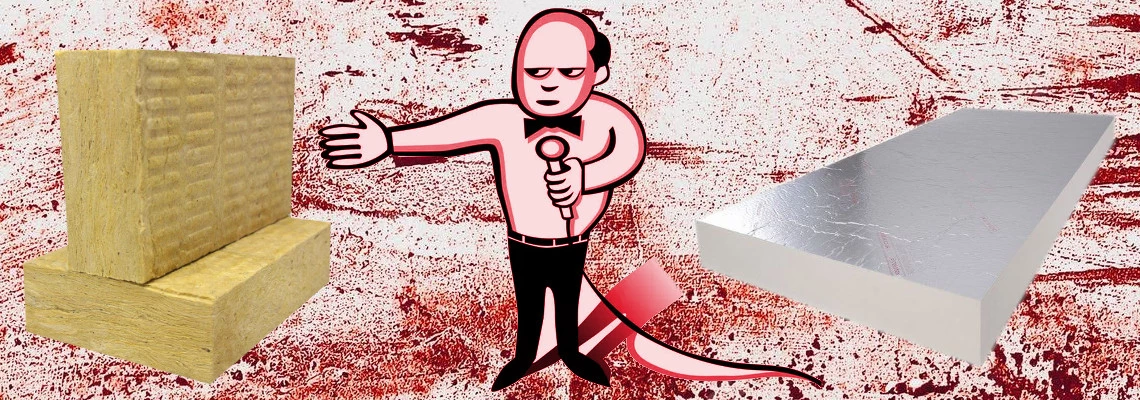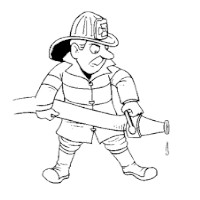
IS ROCKWOOL BETTER THAN FOAM INSULATION BOARDS?*
Are you in the process of insulating your home and trying to decide between Rockwool and foam insulation boards? It can be a tough decision, as both options have their pros and cons. However, after careful research and consideration, we've come up with 6 reasons why Rockwool beats foam insulation boards every time. In this blog, we'll explore these reasons and help you make an informed decision when it comes to insulating your property. So, let's dive in!
 Table of contents
Table of contents
IS ROCKWOOL BETTER THAN FOAM INSULATION BOARDS?
ROCKWOOL vs PIR FOAM INSULATION
Easy Installation
Superior Fire Resistance
Easy to Transport
Breathability
Excellent Acoustic Insulation
Rodent-resistant insulation
IS POLYSTYRENE INSULATION BETTER THAN ROCKWOOL?
IS SPRAY FOAM BETTER THAN ROCKWOOL?
ROCKWOOL vs PIR FOAM INSULATION
Insulation boards, also known as PIR rigid foam insulation, offer high levels of insulation with minimal thickness. They are made of polyisocyanurate, and can be easily cut to fit into any space. They are also water-resistant and provide excellent thermal conductivity of 0.022W/mk (the lower the better). However, they are not as environmentally friendly as Rockwool and can emit harmful gases when burned.
Rockwool, on the other hand, is made of natural stone and has a relatively low thermal conductivity of 0.035W/mK, making it an excellent option for insulation. It also offers excellent acoustic insulation, which can be beneficial in reducing noise pollution. It is also fire-resistant, and does not emit harmful gases. However, it is thicker than insulation boards, which can make it difficult to fit into tight spaces.
Here are 6 top reasons why Rockwool beats foam insulation boards every time:
1. Easy Installation
 Rockwool is much easier to install than foam insulation boards, and it provides better coverage. Cutting Rockwool to fit around obstacles like pipes or electrical wires is much easier than cutting foam boards. For more information on cutting Rockwool check out our other articles.
Rockwool is much easier to install than foam insulation boards, and it provides better coverage. Cutting Rockwool to fit around obstacles like pipes or electrical wires is much easier than cutting foam boards. For more information on cutting Rockwool check out our other articles.
However, Rockwool is a lot more irritating to the skin than foam insulation boards, making it a harder option for DIY insulation projects.
2. Superior Fire Resistance
 Rockwool is made from natural stone, and as such, it is naturally resistant to fire. It is non-combustible, which means it will not burn, melt, or produce toxic smoke or gases during a fire. This property makes it an ideal insulation material for use in buildings where fire safety is a concern.
Rockwool is made from natural stone, and as such, it is naturally resistant to fire. It is non-combustible, which means it will not burn, melt, or produce toxic smoke or gases during a fire. This property makes it an ideal insulation material for use in buildings where fire safety is a concern.
On the other hand, PIR (Polyisocyanurate) boards are a type of foam insulation that is made from plastic polymers. These materials are highly combustible and can easily catch fire. In fact, PIR boards can burn at temperatures as low as 250°C, which is relatively low when compared to other insulation materials like Rockwool.
To illustrate the difference, imagine a building with Rockwool insulation installed in the walls, floors, and ceilings. In the event of a fire, the Rockwool insulation would not catch fire or contribute to the spread of the fire. This would give occupants more time to evacuate the building and allow firefighters more time to contain and extinguish the fire.
In contrast, if the same building were insulated with PIR boards, the insulation could catch fire and contribute to the spread of the fire. This could result in more severe damage to the building, increased risk to occupants, and more difficult and dangerous firefighting conditions.
Overall, the fire-resistant properties of Rockwool make it a safer and more reliable choice for insulation, especially in buildings where fire safety is a priority.
3. Easy to Transport
 Rockwool insulation has several advantages over foam insulation boards when it comes to transport and handling. One of the main advantages is its smaller dimensions. Compared to foam insulation boards, Rockwool is smaller, making it easier to transport.
Rockwool insulation has several advantages over foam insulation boards when it comes to transport and handling. One of the main advantages is its smaller dimensions. Compared to foam insulation boards, Rockwool is smaller, making it easier to transport.
This smaller size also makes Rockwool insulation easier to carry through tight spaces and narrow city streets, which can be particularly useful in urban areas like London, where space is at a premium. In contrast, foam insulation boards can be large and bulky, which can make them more difficult to transport and handle in tight spaces.
In addition to being more transportable, Rockwool insulation is also easier to install than foam insulation boards. It can be easily cut to size and shape with a simple utility knife, which means there is no need for specialised equipment or tools. If you want to learn more about how to cut and install Rockwool insulation, be sure to check out one of our other articles on the topic! This can save time and money on installation costs, especially for smaller or more complex projects.
Overall, the smaller dimensions and ease of handling of Rockwool insulation make it a more practical and cost-effective option for transport and installation, particularly in tight spaces and urban areas.
4. Breathability
 As mentioned earlier Rockwool insulation is a natural product made from stone wool, and does not contain harmful chemicals like PIR foam insulation boards. This makes it a safer and healthier option for both people and the environment. In addition, Rockwool insulation is free from harmful volatile organic compounds (VOCs) that can be released into the air, which can cause respiratory issues and other health problems.
As mentioned earlier Rockwool insulation is a natural product made from stone wool, and does not contain harmful chemicals like PIR foam insulation boards. This makes it a safer and healthier option for both people and the environment. In addition, Rockwool insulation is free from harmful volatile organic compounds (VOCs) that can be released into the air, which can cause respiratory issues and other health problems.
Another advantage of Rockwool insulation is its ability to breathe and allow moisture to evaporate. This helps to prevent the growth of mould and mildew, which can be a common problem in UK areas with high humidity. In contrast, glass wool insulation does not dry out when wet, and can become a breeding ground for mould and mildew if it gets damp.
Rockwool insulation's ability to breathe and prevent mould growth makes it an excellent choice. It is also a great option for buildings that require high levels of air quality, such as hospitals and schools.
Overall, the natural composition and breathable properties of Rockwool insulation make it a safer, healthier, and more effective insulation option than foam insulation boards and glass wool insulation.
5. Excellent Acoustic Insulation
 Rockwool insulation has a unique structure that allows it to effectively absorb and reduce sound transmission. Its fibres are arranged in a way that creates millions of tiny pockets of air, which helps to dampen sound waves. This makes Rockwool insulation ideal for reducing noise pollution in buildings.
Rockwool insulation has a unique structure that allows it to effectively absorb and reduce sound transmission. Its fibres are arranged in a way that creates millions of tiny pockets of air, which helps to dampen sound waves. This makes Rockwool insulation ideal for reducing noise pollution in buildings.
For example, in office buildings, Rockwool insulation can be used in walls and ceilings to reduce noise from neighbouring offices or outside traffic. Libraries often use Rockwool insulation to create quiet study spaces where readers can concentrate without distraction. Recording studios also use Rockwool insulation to create soundproof rooms for recording and mixing music.
Compared to other insulation materials like foam boards, Rockwool insulation has the best acoustic properties. Foam boards, for example, are not as effective in reducing noise because they reflect sound waves instead of absorbing them. Fiberglass insulation can also be effective in reducing noise, but it is not as dense as Rockwool and may not work as well in high traffic areas or noisy environments.
6. Rodent-resistant insulation
 Rockwool is a superior choice over PIR insulation when it comes to rodent attractiveness for several reasons. Firstly, Rockwool is made of spun molten rock fibres, which do not provide a food source for rodents, whereas PIR is made of plastic, which can be more appealing to them.
Rockwool is a superior choice over PIR insulation when it comes to rodent attractiveness for several reasons. Firstly, Rockwool is made of spun molten rock fibres, which do not provide a food source for rodents, whereas PIR is made of plastic, which can be more appealing to them.
Secondly, Rockwool has a dense structure, making it harder for rodents to burrow through, whereas PIR is softer and easier to chew through. Thirdly, Rockwool is water-resistant, preventing moisture buildup, which can attract rodents, while PIR can become waterlogged and create an ideal environment for rodent infestations.
In summary, Rockwool is a safer and more effective option for preventing rodent infestations than PIR insulation.
IS POLYSTYRENE INSULATION BETTER THAN ROCKWOOL?
 Polystyrene insulation, or EPS (expanded polystyrene), is a popular choice for insulation due to its affordability and excellent insulation properties. However, it is important to note that EPS is not as environmentally friendly as Rockwool insulation. EPS is made from petroleum-based chemicals and is not biodegradable, which means it can take hundreds of years to break down in landfills.
Polystyrene insulation, or EPS (expanded polystyrene), is a popular choice for insulation due to its affordability and excellent insulation properties. However, it is important to note that EPS is not as environmentally friendly as Rockwool insulation. EPS is made from petroleum-based chemicals and is not biodegradable, which means it can take hundreds of years to break down in landfills.
Furthermore, EPS insulation can release harmful gases when it is burned, which can be harmful to both humans and the environment. The gases that are released when EPS is burned can contribute to air pollution, which can have negative health effects on people living nearby.
In contrast, Rockwool insulation is a much more environmentally friendly option. It is made from natural stone and is completely recyclable, which means it can be reused in other applications. Additionally, Rockwool insulation is non-combustible and does not release harmful gases when it is burned, making it a safer option for your home and the environment.
In summary, while Polystyrene insulation may be a cheaper option for insulation, it is not as environmentally friendly as Rockwool insulation. Rockwool insulation is made from natural stone, is completely recyclable, and is a safer option for your home and the environment.
IS SPRAY FOAM BETTER THAN ROCKWOOL?
Spray foam insulation is another popular option that offers excellent insulation levels. It is made of polyurethane and is sprayed onto surfaces, creating a tight seal that prevents air leakage. While it offers excellent insulation, it is not as environmentally friendly as Rockwool and can be difficult to remove once applied. Wool insulation, on the other hand, is an environmentally friendly option that offers good insulation levels. However, it can be more expensive than other types of insulation. If you want to find out why banks don’t like your home being insulated with spray foam click here
CONCLUSION
In conclusion, you may think foam insulation boards are a cheap and effective way to insulate your home, but the truth is far more sinister. The deadly consequences of using foam insulation boards can have a catastrophic impact on your home and health, leaving you vulnerable to a litany of terrifying hazards.
Related articles:
How to estimate how much insulation you need?
Should I remove 80 years old insulation?
Rockwool® acoustic insulation slabs overview
*All the information provided in the content published on Insulationgo blog is for informational and educational purposes only. Insulationgo LTD makes every effort to ensure the accuracy and timeliness of the content, but we do not assume any responsibility for any errors or omissions.
The information presented on this blog should not be considered as professional advice or a substitute for consulting relevant experts. Before making any purchase decisions or taking action based on the information presented here, it is strongly recommended to contact the product manufacturer directly to verify the details and ensure its suitability for your specific needs.
By using this blog, you acknowledge and agree that Insulationgo LTD shall not be held liable for any damages, losses, or inconveniences arising from the use or reliance on the information provided herein. This limitation of liability applies to all users of the blog, including but not limited to visitors, readers, and subscribers.










































































































